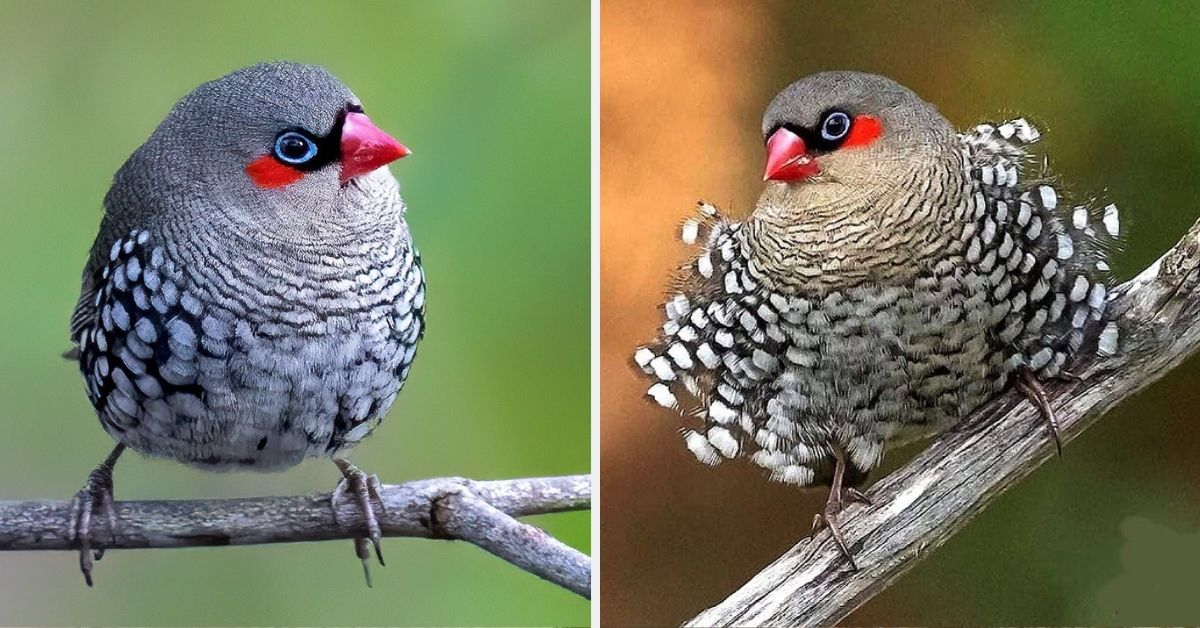The Enchanting Red-Eared Firetail: A Plump Bird with a Short Tail

The red-eared firetail (Stagonopleura oculata), also known as the boorin, is a tiny, plump, and short-tailed bird that captivates with its unabashedly beautiful and surprisingly exquisite appearance. Resembling a finch, this small grass-finch features black-barred and white-spotted plumage, characterized by a scarlet bill, a striking black mask, and vivid crimson patches behind its eyes and on its rump. The upper parts of its plumage boast olive-brown tones, while its breast exhibits a buff-brown color, thinly barred with black. White spots embellish the bird’s blackish underparts, adding to its delicate charm.

During the breeding season, the male red-eared firetail undergoes a stunning transformation, intensifying its coloring to impress potential mates. These beautiful birds are commonly found in dense wetland vegetation, specifically in coastal and subcoastal regions of Southwest Australia. They prefer habitats such as forest understories, paperbark swamps, heathlands, river frontages, and gullies. Eucalyptus trees, particularly Eucalyptus marginata, along with riparian vegetation adjacent to eucalypt forests, make up their wooded homes.


These birds form lifelong bonds, with pairing occurring in their first year. The breeding season typically spans from October to November, possibly extending into January. Their nests are skillfully woven from grassy materials and reinforced with green plant tips, forming a rigid down-facing spherical structure. Each clutch comprises four to six eggs, which hatch after an incubation period of fourteen days. Both parents diligently take turns attending to the eggs every one and a half to two hours. After the young hatch, the parents remain in the nest for several seconds or up to half an hour during shift changes, displaying their nurturing instincts.




Due to its wide range and population stability, the red-eared firetail is currently not listed as a threatened species on the IUCN Red List.
In conclusion, the red-eared firetail, with its modest yet captivating beauty, exemplifies nature’s delicate wonders. Its presence in the Australian wetlands adds to the allure and biodiversity of this unique region, making it a true treasure to behold.



